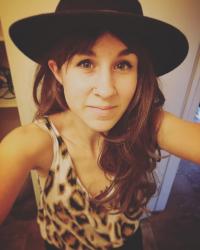I have seen nothing in my years on this planet. Not a thing.
Of course, you realize this is not a revelation and that I’m speaking figuratively as we know I’ve not seen nothing in my life. However, I dare you to try not to feel that way about your own life after watching The Salt of the Earth. This documentary reveals the history of Sebastião Salgado, Brazilian social documentary photographer and photojournalist who has spent the latter majority of his life pining and pursuing the human condition better than most. NW Film Center played this picture on the big screen at Whitsell Auditorium on Thursday night, and I’d suggest seeing it on nothing less than that to get the full effect.
Salgado was previously a scholar economist before he began photographing by accident at the age of thirty. That’s when his wife Lélia bought her first camera. The first photograph he ever took was of her. I wish that I could easily find it on the internet for your reference. I respect that I can’t. You’ll just have to see the tiny share for yourself in the film. This photo of Lélia already foreshadows his future-play with light and dark. A quote I found from him explains what I believe is a patented shadow focus saying, “I realized recently that most of my photographs are shot against the light. I was raised in the shadows. The sun injured my nose and it was necessary to have a hat, so everything came to me from light into shadow.”

Contrast and exposure are serious markings for a photographer. This coming from a young one still trying to determine which end of the spectrum she wants to be on. Mostly I think I side with Salgado in this respect. He tends to underexpose just enough to reveal the serious detail within darkness. Bringing down the exposure creates depth within a picture that may not be revealed by much lighter and washed out methods; or overexposure. This may speak to my inexperience, but when I’m editing photos I rarely ever leave the exposure organic.
There also aren’t many photos where Salgado uses a wide aperture, which is a standard I have to veer from personally. The aperture determines the depth of focus, or how detailed and sharp a photo appears beyond the initial focus point. This is a metaphor for his commitment to getting the bigger picture. He doesn’t demand you focus on the yearning within the eyes of the subject in front of you, instead he asks you to digest the entire story that he documents through his careful eye for inner content — the story behind the subjects.

At one point in the documentary, Sebastião and his son Juliano (assisting to director Wim Wenders) venture into the arctic tundra to photograph the untouched beauty of the earth’s creatures. They have trouble photographing the walruses when a nuisance polar bear scares them into the sea. As majestic as it would seem to photograph the great white bear, his concern is in the expanse surrounding it. A picture of a bear can be extraordinary in it’s own right but it is the texture of the background that truly develops the story; the wonder; the questions in our minds.
But it wasn’t until later in his career that Salgado focused on the seemingly infinite miracles of our planet. He struggled, as we all do, to see the splendor, especially after purposefully exposing himself to so much tragedy. For many years he traveled from country to country photographing horrifying realities; war, famine, starvation, oppression and more. And are you numb to that last sentence after reading? I can understand and so I won’t detail to you so much the many places he’s been and the destruction he’s seen as you can Google its entirety yourself.
I’d rather show you a couple of my favorites.
Series: Exodus: A Species in Transit
This is a series of exiles, survival and transition. The photographs from Kuwait in the 1990’s are remarkable. Director Wim Wember provides us with so much insight by including a layered commentary from Salgado throughout, and so when we reach these pictures he comments on them specifically. The ones I adore most of this set are actually those of the horses trapped inside the property of a wealthy Kuwaiti family. He mentions they were driven mad after being left to writhe beneath the never-ending gasoline skies. Another image the internet could not provide me with.

Series: Genesis: A Rebirth
It’s easy to see that Genesis foster’s a necessary hope for Salgado, it’s what brought him back to his camera. Within these pictures he takes us back to a time before human strife in places and creatures that still exist today. The photograph below made me sink into my seat upon seeing it on such a large screen. I have no fear of reptiles and I don’t believe that’s what got me here. This really could have been taken at the beginning of time. The feel of it relies heavily on the photographer’s talent for dimension, use of frame, heavy play with dark and abstraction of light.

The Salt of the Earth documents far more than Sebastião Salgado’s history and development as a photographer. From it we are able to glimpse through a static eye the countless shudders in his soul; our mirror. We can live, eclipsed by eyes mimicking sorrowful eyes just as we can visit their determination in that exact frame. What I’ve shown you, though some gripping, barely scratches the surface in description of his documentation of the salt of the earth, our species. This film was shown as part of NW Film Center’s On Arts and Artists series and unfortunately, it only ran Thursday night.
I encourage you to get to this film however you can. You can’t be unaffected. You won’t be disappointed.



